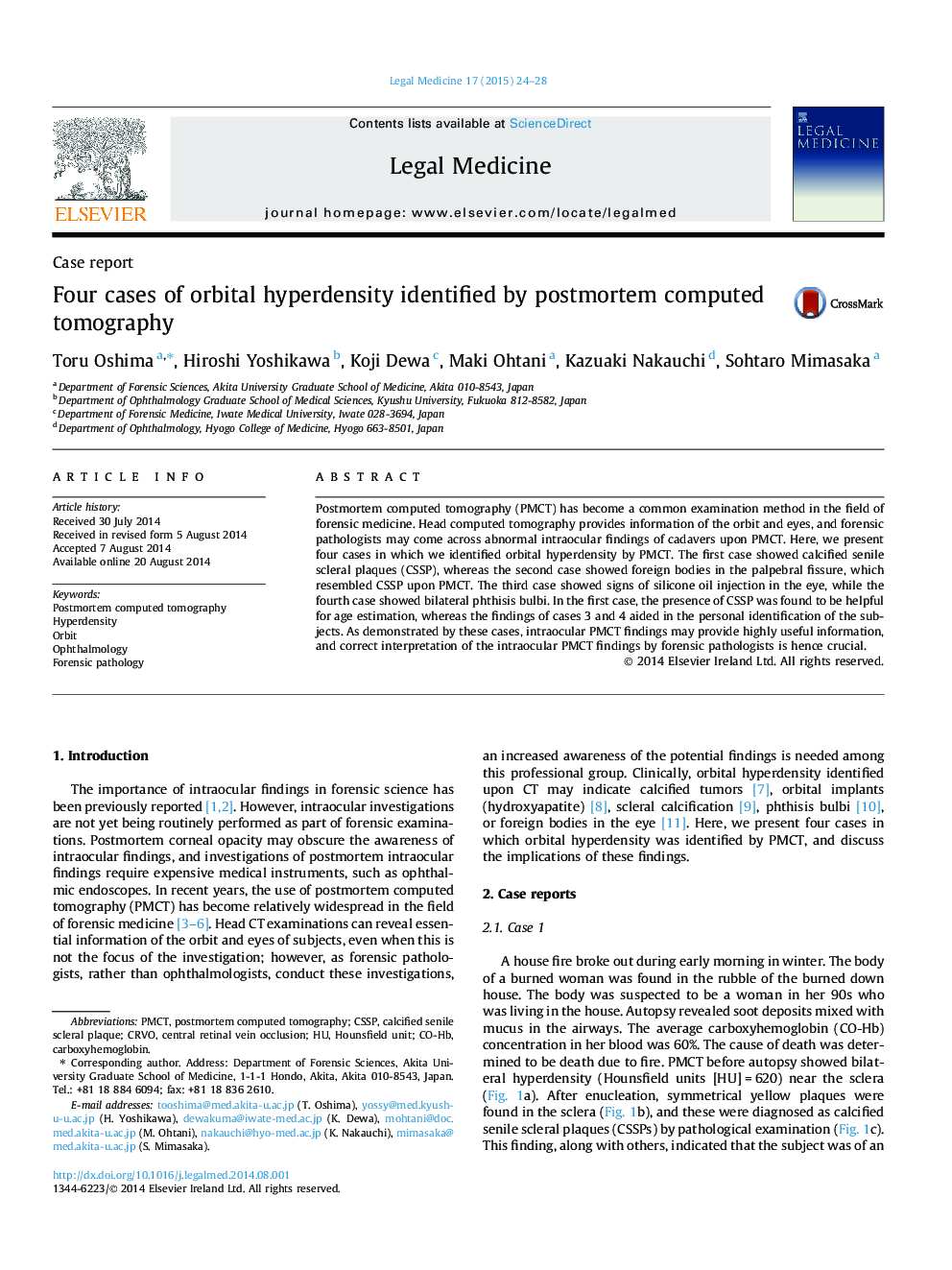| کد مقاله | کد نشریه | سال انتشار | مقاله انگلیسی | نسخه تمام متن |
|---|---|---|---|---|
| 103509 | 161384 | 2015 | 5 صفحه PDF | دانلود رایگان |
• Head computed tomography also provides information of the orbit and eyes.
• Forensic pathologists may encounter abnormal intraocular findings of cadavers on PMCT.
• Intraocular PMCT findings may provide highly useful information.
• Hence, correct interpretation of these findings by forensic pathologists is crucial.
Postmortem computed tomography (PMCT) has become a common examination method in the field of forensic medicine. Head computed tomography provides information of the orbit and eyes, and forensic pathologists may come across abnormal intraocular findings of cadavers upon PMCT. Here, we present four cases in which we identified orbital hyperdensity by PMCT. The first case showed calcified senile scleral plaques (CSSP), whereas the second case showed foreign bodies in the palpebral fissure, which resembled CSSP upon PMCT. The third case showed signs of silicone oil injection in the eye, while the fourth case showed bilateral phthisis bulbi. In the first case, the presence of CSSP was found to be helpful for age estimation, whereas the findings of cases 3 and 4 aided in the personal identification of the subjects. As demonstrated by these cases, intraocular PMCT findings may provide highly useful information, and correct interpretation of the intraocular PMCT findings by forensic pathologists is hence crucial.
Journal: Legal Medicine - Volume 17, Issue 1, January 2015, Pages 24–28
